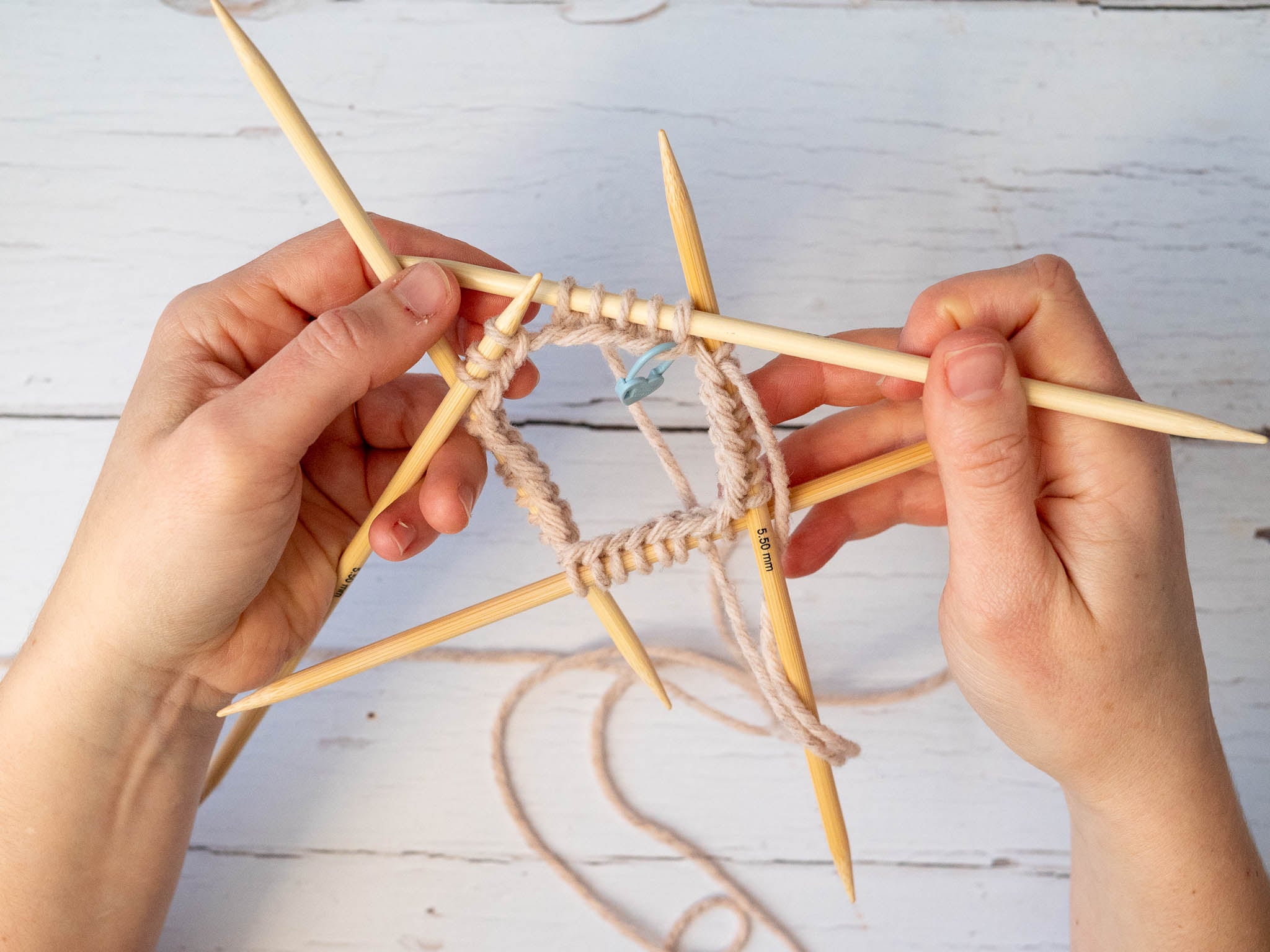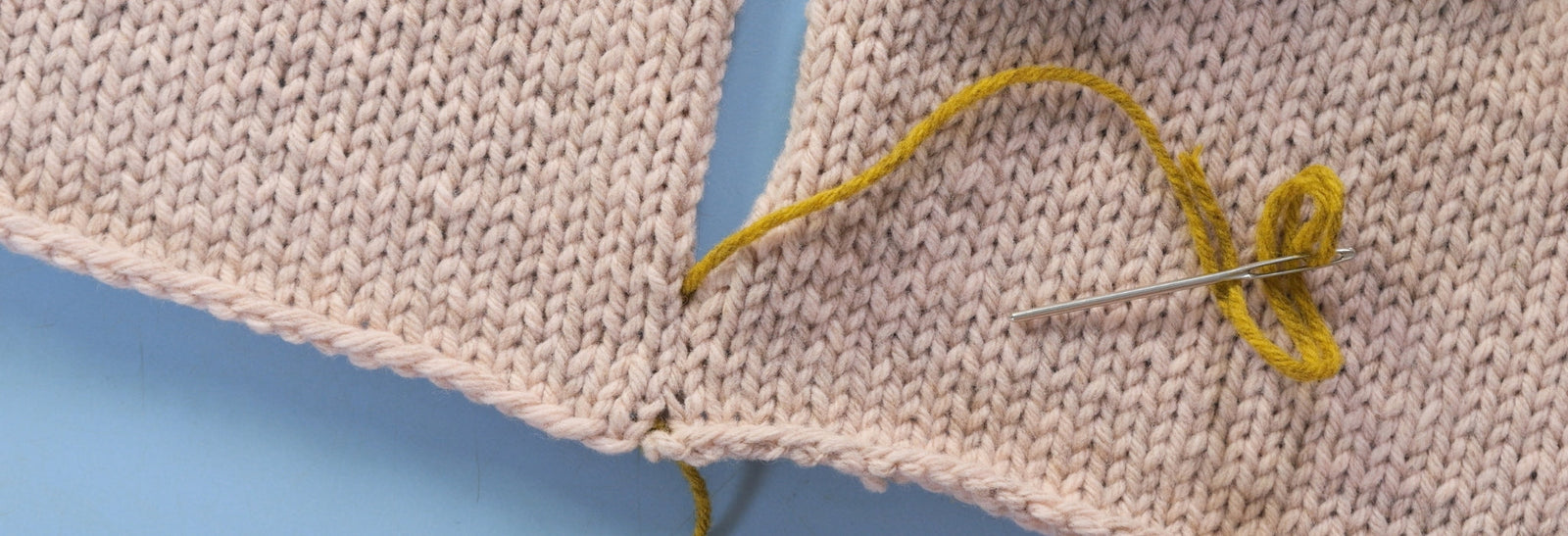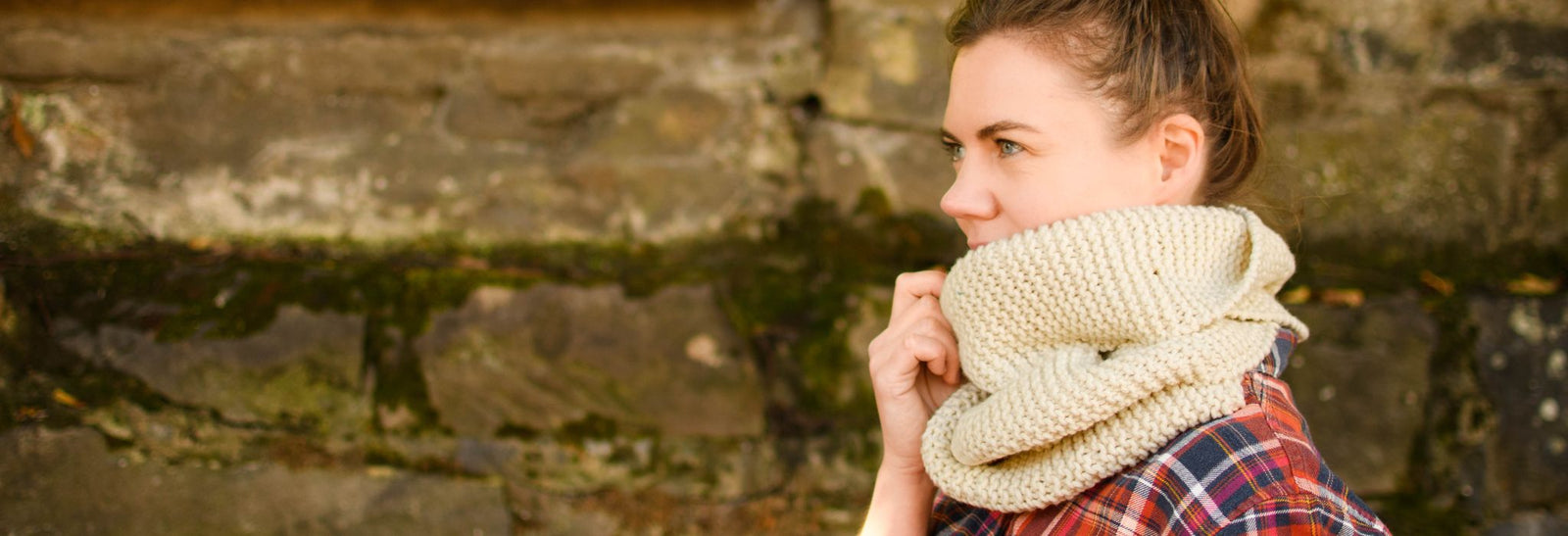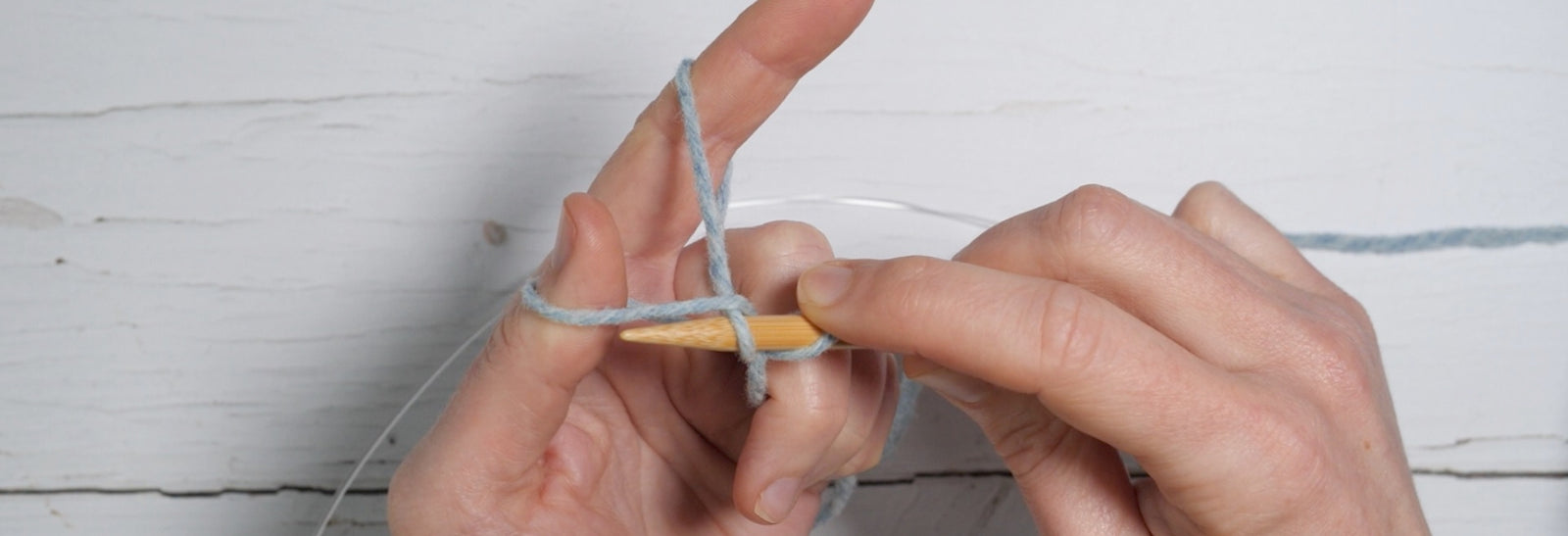Your Cart is Empty

Learn to knit: How to knit in the round with double pointed needles
November 25, 2021
Double pointed needles can be intimidating - how do you knit with so many needles? Knitting in the round on double pointed needles creates a seamless tube of fabric, and allows you to work small circumferences such as socks and mitts that don't have enough stitches to fit around a circular needle.

Working in the round on DPNs is similar to working on a circular needle, except that the stitches are distributed over 3 or 4 rigid needles rather than one flexible cable. You are still knitting with just two needles at a time - the other needles are simply holders for the stitches you haven’t worked yet.
Although your first time with double pointed needles (DPNs) might feel a bit like wrestling a porcupine, with a little practice you will be sailing along and impressing everyone with your skills. You might also find that, like many knitters, you prefer to work small circumferences using the magic loop technique.

What are double pointed needles?
Double pointed needles, as the name suggests, have points on both ends of the needle (rather than one, as for straight needles), and come in sets of 4 or 5. One needle is always empty as your right-hand needle, and the remaining 3 or 4 needles hold the worked stitches.

DPNs come in all sizes and materials, including wood, metal, plastic, and bamboo. They also come in a few different lengths. Short DPNs are 4–5” long, and won’t hold very many stitches each, so are best suited for small projects with few stitches. Medium length DPNs are 6–7” long, and are useful for most projects, including sleeves and slippers.

Long DPNs also exist, and are sometimes used for knitting whole colourwork sweaters without circular needles!
Knitting in the Round on DPNs
The steps are similar to knitting in the round on one circular.
Cast on all the stitches
Use your favourite cast on method to cast on all the stitches to one needle.



Distribute stitches
Working from the first cast-on stitch, slip about 1/3 or 1/4 of the stitches to one double pointed needle, being careful not to drop or twist the stitches.


Then take up another needle and slip more stitches to this second needle. Repeat for a third needle if necessary. Then leave the last 1/3 or 1/4 of the stitches on the cast on needle.


Some patterns include directions for how many stitches to arrange on each needle. For example, many sock patterns will distribute the heel stitches on one needle.
Whether you distribute your stitches over 3 or 4 stitches is personal preference. You might prefer to use 3 needles for smaller projects, and 4 for larger.
Join, being careful not to twist


Arrange your 3 or 4 needles with stitches on them into a triangle or square - this is the outline of your knitted tube. Work your way around the stitches and make sure that none of them are twisted around the needle, or twisted between the needles. The working yarn should be attached to the last cast-on stitch, and this needle should be on the right-hand side of the triangle or square.

The one empty DPN is your right needle. Insert it into the first cast-on stitch, then wrap the working yarn around it to complete the stitch. Your work should now be joined into a tube.

Mark the beginning of the round between two needles by inserting a locking stitch marker into the edge of the fabric.
Knit in the round

Continue to work across the stitches on the first needle.

When you reach the end of the first DPN, you will have a new empty needle to use as your right needle.

Rotate the work to the right by one needle. Now use the empty needle to knit across the second DPN. Rotate the work again and continue knitting across the third needle. Repeat for the fourth needle. You’ve completed one round!

As you finish each DPN, make sure to push the stitches to the centre of the needle so they don’t slip off the ends.

Continue in this manner, working each double pointed needle and then rotating to work the next one, around and around.

You may encounter patterns that are written specifically for double points, and use “needle 1” and “needle 2”, etc to provide pattern instructions.

Tips and Tricks
- You can rearrange stitches so that the beginning of the round is in the middle of a needle (with a stitch marker) rather than between needles.
- If you find you are dropping stitches off the ends of your non-working needles, you can try double pointed needle stoppers (or elastic bands) on the ends. You can also try different needle materials, such as wood, that are less slippery than metal.
- If you find that suddenly your work is inside out, with the right side on the inside of the tube, you’ve probably picked it up and started knitting in the opposite direction! You should knit with the needles closest to you, with the tube of fabric growing below the needles.
- Laddering refers to a slight gap in the stitches where you have changed needles; keep it in check by making sure the first and last two stitches on each needle are tightened a little extra. You can also slip stitches between needles at each needle junction so that the needle changes aren’t all in the same stitch column. Some knitters also find that using 4 needles (plus a 5th to knit onto) helps to prevent ladders of loose yarn between the needles.
Looking for an alternative to double pointed needles? Learn to knit in the round on one circular or Magic Loopwith our other knitting in the round tutorials!
Also in Journal

Learn to Knit: Mattress Stitch
March 29, 2023
By following our step-by-step mattress stitch knitting tutorial, you'll learn how to make your seams look beautiful and how best to prepare your knitting so that when you seam it with mattress stitch, it goes smoothly on the first try.
Read More
How to Knit a Scarf: A Beginners Guide to Scarf Knitting
March 23, 2023
Want a quick and easy beginners tutorial on how to knit a scarf? This garter stitch scarf is easy to knit and requires just 3 skills; casting on, the knit stitch and casting off.
Read More
Learn to knit: the long tail cast-on
February 03, 2022
The long tail cast on is a great multi-purpose knitting cast on and the perfect place for beginner knitters to start. Learn how to work the long tail cast on and how to estimate the length of yarn needed with our clear step by step tutorial and video.
Read More Recent Articles
- Learn to Knit: Mattress Stitch March 29, 2023
- How to Knit a Scarf: A Beginners Guide to Scarf Knitting March 23, 2023
- Learn to knit: the long tail cast-on February 03, 2022
- How to Kitchener Stitch December 09, 2021
- Crochet Provisional Cast-on December 02, 2021
- Learn to knit: How to knit in the round with double pointed needles November 25, 2021
- Learn to knit: How to knit in the round using the magic loop technique November 25, 2021
- Learn to knit: How to knit in the round November 25, 2021
- Knitted Gift Ideas for you and your loved ones November 18, 2021
- Celebrating our Porty Hat Preview Knitters October 28, 2021
Free resources
-
KALS, step-by-step pattern guides and free patterns
Learn brioche with the free Daniel's Hat pattern
Tombreck - a free chevron beanie pattern
Working the brioche neck detail on the Polwarth sweater
Basics
Casting on
Decorative Channel Island Cast-on
Binding off
3 Easy Stretchy Bind-offs (p2tog bind-off; k2togtbl, k1 bind-off; Jeny's surprisingly stretchy bind-off)
Tubular Bind-off for brioche stitch
Increasing
Paired increase methods compared
Decreasing
Brioche stitch double decreases
Knitting in the round
How to Knit in the round using Magic Loop
How to Knit in the round using DPNs
Short rows
Swatching and gauge
Tips and tricks
Avoiding ears when binding off
Tighter purl stitches for neater cables and ribbing
Cabling without a cable needle
Reading knitting patterns
Understanding "continue in pattern"
Finishing
Garment knitting
Joining the body and sleeves on a seamless bottom up sweater
Sizing
Inclusive garment knitting
How to pick a garment without a model for you (specifically addresses finding garment patterns when your gender identity isn't represented and the styles you want to knit might not be sized to fit your body)
How does ease affect inclusive size ranges?
Specific stitch patterns
Lace
Identifying and fixing mistakes in lace knitting
Colourwork
Getting started with stranded colourwork
Understanding colour dominance
Working stranded colourwork over small circumferences
Decreases in stranded colourwork
Holding the yarn for stranded colourwork
Ladderback Jacquard (a neat way to deal with long floats)
Cables
Cabling without a cable needle
Cabling without a cable needle on the wrong side
How to knit cabled decreases
Closed ring cable increases and decreasesBrioche
How to work brioche stitch in the round
Other crafts
Cross stitch
How to begin your first large cross stitch project
How to finish a cross stitch project with an embroidery hoop frame
Mending

Sign up today
Find out the latest news from the studio such as sales, pattern releases, and new workshops or KALs our learning community, The Knitwork. We also share helpful tips and exclusive subscriber discounts...


